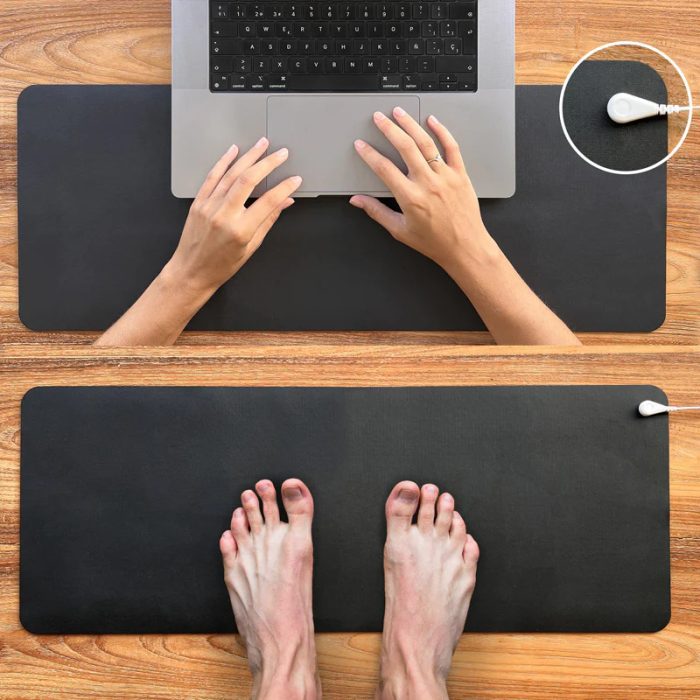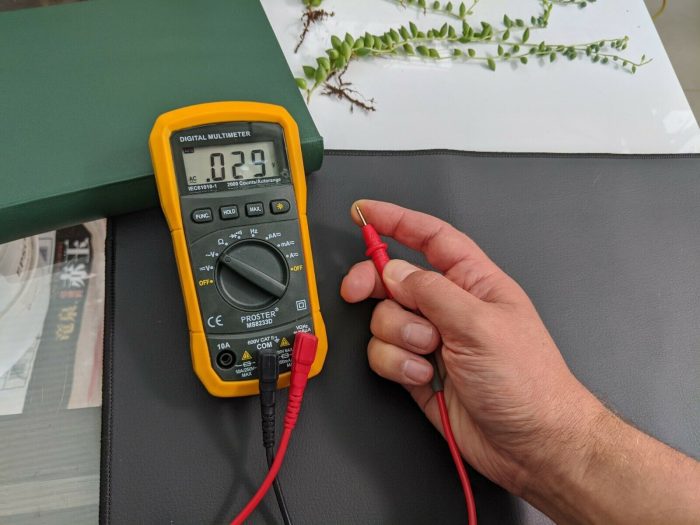If you already own or are planning to buy a grounding mat but are unsure how to confirm that it is properly working, worry not. In this article, you will be able to read everything you need to know regarding how to test grounding mat with multimeter and ensure that your mat is actually doing its job.
Does this sound like the information you were looking for? Then hop on this journey and let’s learn more about testing grounding mats using a multimeter. Read on!

How to Test Grounding Mat With Multimeter
When you want to ensure that your grounding mat is working properly, the best way to do that is to test it using a multimeter. As this tool has proven to be the most efficient for this type of testing, in continuation, you can read how to test grounding mat with a multimeter successfully.
Additionally, if you have not used a multimeter previously, there is nothing to worry about. I made sure to include step-by-step instructions so anyone can test their grounding mat regardless of their technical knowledge, skills, and experience. All you need to do is simply follow the steps, and you will see whether your grounding mat works or not in no time.
Why Do You Need to Test Your Grounding Mat Before Using It?
Before I move on to the actual steps on how to test grounding mat with multimeter, I wanted to disclose why you need to test your grounding mat before using it. As you probably already guessed, testing the grounding mat before using it is crucial to ensure that the mat uses the right voltage and to provide the user with the measurements of both AC electricity and resistance levels.
By having these readings on hand, you will be able to stay safe, which is the number one important thing. That’s because grounding mats can sometimes represent a danger if not used properly.
Step-By-Step Instructions on How to Test Your Grounding Mat With a Multimeter
Now that you have seen the importance of testing a grounding mat, it is time to test it. But, one thing before you begin – you first must ensure that you have a socket with three holes because the grounding mat can be plugged in only in that type of socket. This is because the three-hole socket is essential to achieve optimal and utmost grounding, which is exactly what you want when using a grounding mat.
Test your outlets
As many times the faulty functioning of the grounding mat can be in the outlets, it is always wise to start by checking as many outlets in your home as possible, especially the one in which you will plug the mat.
To do this, you will first need to turn the multimeter on as per instructions of the device’s manufacturer. After doing so, take the black lead and connect it to the ‘neutral’ port, which is usually the one on the left in your socket. Then, take the red lead on your multimeter and connect it to the live port of the socket, which is usually on the bottom right-hand side of all three holes.
Finally, after you take the readings from measuring the live and neutral voltage, move the black lead from the neutral port to the ground socket. If everything works correctly, these two readings should be almost the same. Remember that the greater the difference between them, the more electricity problems you might have.
Ensure that the grounding mat is plugged in
Once you reassure that the outlets are working fine, you need to ensure that the grounding mat is plugged into the suitable socket.

Setting the multimeter
When you confirm that all sockets work and the grounding mat is plugged in, it is time to finally test the grounding mat with a multimeter. The first step you will need to do is set the multimeter. You can do this by turning on the multimeter device and setting it to V-20. After you do this, it is time to place the cords.
Attach the black cord
Take the black cord and attach it to the COM port of the multimeter device. Then, take the opposite side of that same cord and attach it to the grounding mat. To make this process easier, you can always use alligator clips.
Attach the red cord
When the black cord is all setup, it is time for the red cord. Take the red cord and attach it to the VΩHz port of the multimeter device. Then, take the opposite side of this cord, which is metal, and hold it between your fingers. If you do this properly, you will be able to see a reading on the multimeter device of how many voltages are in your body.
Remember that these readings will change depending on how close or far you are to some other electrical products or appliances in your home.

Test the grounding mat
Finally, while holding the metal from the red cord, take your other hand and place it on the grounding mat. When you do this, you will be able to notice on the multimeter screen of the device that the voltage in your body decreases. When this happens, it means your body is grounded and you have successfully performed the testing. More importantly, it means the grounding mat is working correctly and as it should.
Experiment with and adjust the multimeter
In the end, I would only like to mention that sometimes when you try to test the grounding mat with a multimeter, you might encounter some difficulties getting results. To fix this issue, you can move around while holding the multimeter and see which position helps you to decrease your voltage the best.
Additionally, if you want to try and get even better results, you can sit or stand on your mat with your bare feet on it so that you make more skin-to-skin contact, which can drastically impact and influence the reading and overall effects.
